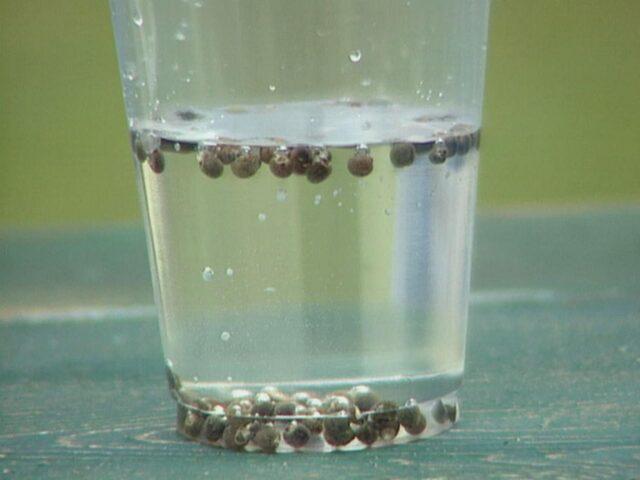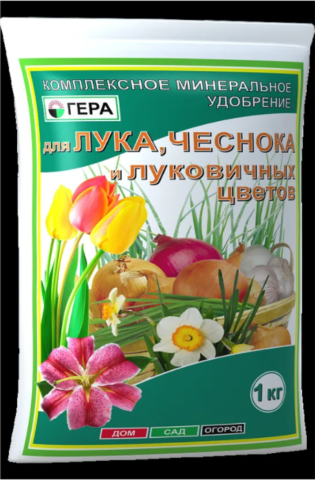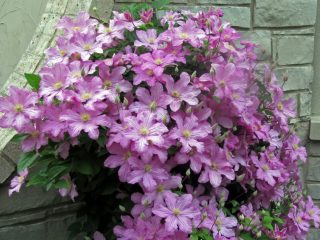Content
The easiest and fastest way to reproduce hyacinth is by bulbs, so this method is used by the vast majority of gardeners and flower growers who cultivate it in the open ground and at home. Those who are planning to try to grow hyacinth from seeds should immediately take into account that this is a labor-intensive, time-consuming process, and its result is unpredictable.
Is it possible to grow hyacinth from seeds?
It is, in principle, possible to grow hyacinth from seeds. But in practice, in the vast majority of cases, only professional breeders who want to create a new variety or hybrid resort to this method.
New specimens almost never inherit the characteristics of the “parent,” so it is unrealistic to predict in advance what the result of an attempt to grow hyacinth from seeds will be. It will be possible to evaluate it only after the first flowering, and you have to wait 5-7 years for it.

To be guaranteed to obtain flowers with varietal characteristics, you must choose one of the vegetative methods of propagation
What do hyacinth seeds look like?
Hyacinth seeds are quite small, up to 2-3 mm in diameter.Their shape is close to spherical, the surface seems to be “wrinkled” or “hairy”. White “tails” stand out against a general black (less often dark gray) background.

To avoid “counterfeiting,” hyacinth seeds should be collected yourself or purchased from trustworthy sellers
How to collect seeds
To grow hyacinth from seeds, you need to mark the healthiest and most developed specimens in the “collection” during flowering. After the buds fade, seed pods form in their place. You need to wait until they are completely ripe - this is “signaled” by the yellowish-amber color and emerging cracks.

The seeds in the green boxes are not yet ripe; you definitely won’t be able to grow hyacinths from them
The boxes cut from the peduncle are dried naturally at home. When they crack and open, the planting material is removed, sifted, and cleared of plant debris.
To grow a flower, they need to provide the correct storage conditions. Hyacinth seeds are poured into paper bags or envelopes and kept in a dark, cool (15-17 °C) place with good ventilation. High air humidity, temperature changes and direct sunlight are especially dangerous for them. Plastic and glass containers are also suitable for storage, but they should not be sealed tightly.
When to plant hyacinth seeds
Since the plant blooms and fades early, its seeds ripen already in early August. To grow new specimens, they are sown at the very beginning of September.If the buds were “kicked out” by a certain date, planting can be delayed until the first ten days of October.
Growing hyacinth from seeds at home
To grow hyacinth from seeds, extensive experience in propagating garden and indoor plants using a generative method is not required. You just need to study the procedure and its important nuances in advance and strictly follow the algorithm.
Preparing hyacinth seeds
The planting material does not have good germination; it ranges from 50-70%. This depends on the condition of the flowers from which the boxes were cut, their storage conditions and other factors.
Before planting hyacinth seeds at home, you must immediately discard the “substandard” ones. They are soaked in saline solution (1-1.5 tbsp per liter of water). Within 10-15 minutes, “hollow” specimens, from which it is definitely impossible to grow seedlings, float to the surface.

The ease of seeds that are not suitable for planting is due to the absence of an embryo in them
Many varieties and hybrids are susceptible to fungal and other diseases. To grow healthy bulbs, disinfect them before planting by treating them in a solution of any fungicide for 30-40 minutes. You can also use home remedies that have an antiseptic effect, such as hot pink potassium permanganate. But the “exposure” time here increases to 1.5-2 hours.
To improve germination, treatment with a biostimulant is also recommended. The most popular drugs that have proven their effectiveness are Epin, Zircon, Heteroauxin.

Biostimulants allow you not only to get more seedlings, but also to grow healthy, strong bulbs from them
There is no consensus on whether hyacinth seeds need to be germinated before planting. Gardeners and flower growers who skip this stage motivate this by the fact that they require vernalization; the sprouts can be seriously damaged by low temperatures, then they will definitely not be able to grow new hyacinths. Those who prefer to germinate seeds indicate better hardiness of new specimens, the brightness of their petals, and the large size of the inflorescences.
Preparing the container and soil
You can sow hyacinth seeds in any shallow but wide enough box or container. It is filled approximately 2/3 with a store-bought substrate for bulbous plants or a home-made soil mixture of fertile high turf, peat chips and coarse river sand, taken in approximately equal proportions.
The container must have holes to drain excess water. Also, fine expanded clay, pebbles, crushed stone, brick chips, and other drainage material are poured onto the bottom in a layer 2-3 cm thick.

The basic requirements for soil are nutritional value, lightness and neutral pH.
Both the substrate and the container in which it is planned to grow hyacinth from seeds must be disinfected before planting. It is enough to scald the container or box with boiling water, heat the soil in the oven, “freeze” it outside in winter, or spill it with a solution of any fungicide.
How to plant hyacinth seeds correctly
Before sowing, the soil in the container is moderately moistened. After allowing the water to soak in, the soil is leveled and 1.5-2 cm grooves are marked. If you want to grow hyacinth from seeds, you cannot plant them at great depths. Otherwise, there is no need to wait for the seedlings to appear - the seedlings will not be able to “break through” to the outside.The furrows are covered with fine sand, and the soil is again lightly sprayed with a spray bottle.
A mandatory stage in growing seedlings is vernalization after planting. The container, covered with cling film on top, is placed in the refrigerator or transferred to a dark room with good ventilation and a constant temperature of 4-5 ° C. It is left there for 30 days, constantly monitoring the condition of the soil and getting rid of condensate drops that form.
Then the container is transferred to a bright, warm room, removing the “shelter”. The desired length of daylight is 8-10 hours, temperature is 22-25 °C. To grow seedlings, the substrate must be constantly maintained in a moderately moist state. During a prolonged “drought,” they inevitably die; in the soil, which is more like a swamp, mold and rot quickly develop. It is also necessary to provide regular access to fresh air into the room, while simultaneously protecting them from cold drafts.

Germination of hyacinth seeds is a very slow and uneven process
Further care of seedlings
The seedlings are very weak and develop extremely slowly. A significant part of them die over the next 1-2 months. At the end of the active growing season, the adult bulbs that remain have their “embryos”: small (up to 5 mm in diameter), pear-shaped, almost devoid of roots.
During this time, a florist or gardener who wants to grow new specimens must provide them with:
- Watering.It will not be possible to grow adult bulbs if you irrigate the seedlings with cold or hard water. The substrate is moistened on average once every 3-4 days, allowing only its surface layer to dry. When watering, it is important to avoid drops of water falling on the above-ground parts of the plants - this increases the risk of developing fungal diseases.
- Feeding. Fertilizers begin to be applied 3-4 weeks after the emergence of hyacinth seedlings. Use specialized store-bought products for bulbous bulbs, reducing their concentration in the solution by 2-2.5 times compared to that specified in the instructions. Seedlings are fed every 15-20 days.
- Loosening. It is necessary to avoid “sintering” of the soil into a dense crust that does not allow air to pass through. But loosening should be superficial and very careful. The “embryos” of the bulbs that were able to grow will most likely die even from minor mechanical damage. It is best to carry out loosening 3-4 hours after watering.

Natural organics and folk remedies are strictly contraindicated for seedlings
Conclusion
Trying to grow hyacinth from seeds is a kind of lottery. New specimens inherit varietal characteristics extremely rarely; you can understand what happened only after the first flowering, which will have to wait at least five years. The procedure for propagating hyacinths by seeds is relatively simple. But gardeners and flower growers who want to spend time and effort on the “experiment” are advised to study its nuances in advance and carry out the necessary preparation. Only in this case can you count on a positive result.








